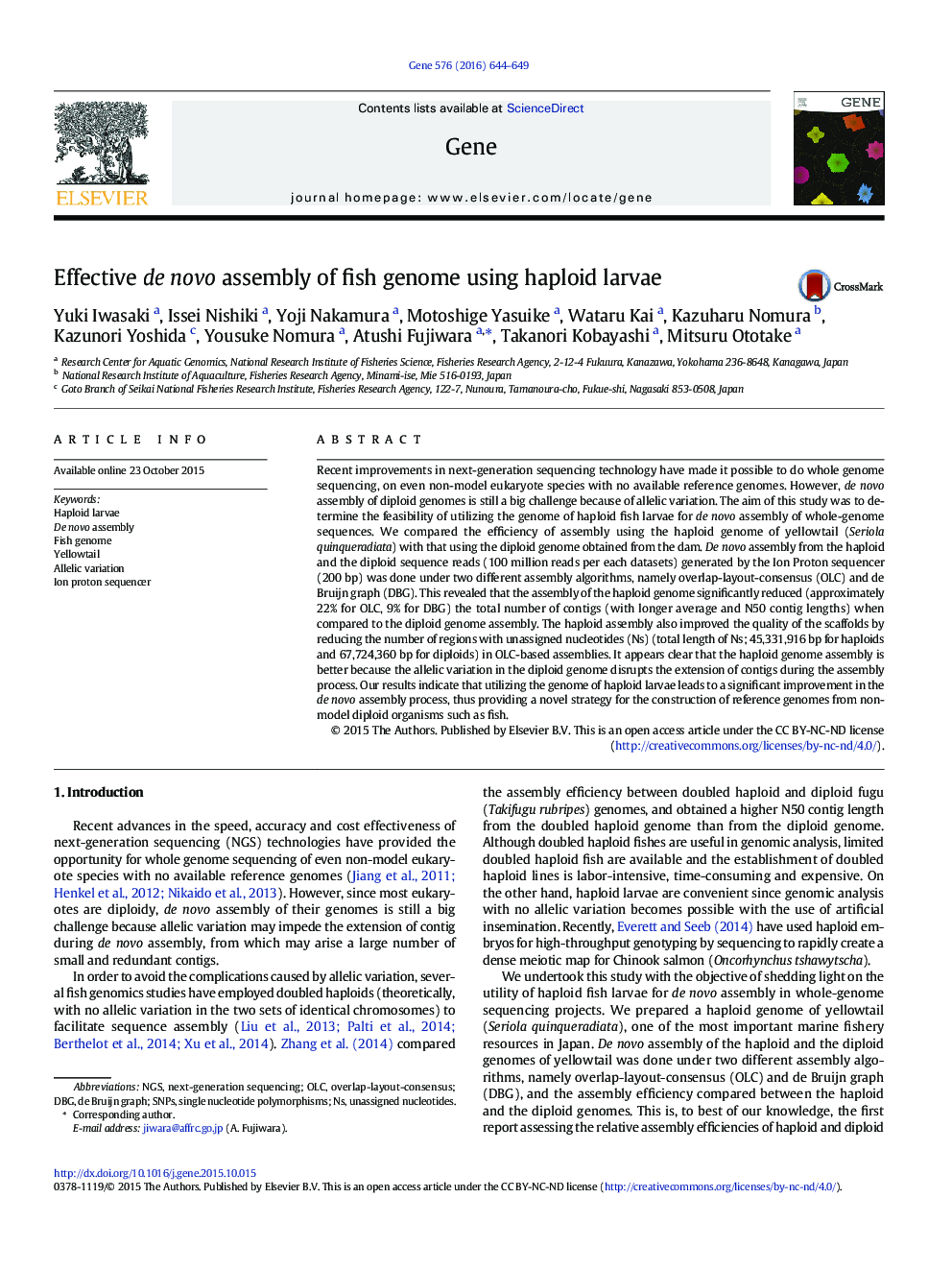| Article ID | Journal | Published Year | Pages | File Type |
|---|---|---|---|---|
| 5905178 | Gene | 2016 | 6 Pages |
Abstract
Recent improvements in next-generation sequencing technology have made it possible to do whole genome sequencing, on even non-model eukaryote species with no available reference genomes. However, de novo assembly of diploid genomes is still a big challenge because of allelic variation. The aim of this study was to determine the feasibility of utilizing the genome of haploid fish larvae for de novo assembly of whole-genome sequences. We compared the efficiency of assembly using the haploid genome of yellowtail (Seriola quinqueradiata) with that using the diploid genome obtained from the dam. De novo assembly from the haploid and the diploid sequence reads (100 million reads per each datasets) generated by the Ion Proton sequencer (200Â bp) was done under two different assembly algorithms, namely overlap-layout-consensus (OLC) and de Bruijn graph (DBG). This revealed that the assembly of the haploid genome significantly reduced (approximately 22% for OLC, 9% for DBG) the total number of contigs (with longer average and N50 contig lengths) when compared to the diploid genome assembly. The haploid assembly also improved the quality of the scaffolds by reducing the number of regions with unassigned nucleotides (Ns) (total length of Ns; 45,331,916Â bp for haploids and 67,724,360Â bp for diploids) in OLC-based assemblies. It appears clear that the haploid genome assembly is better because the allelic variation in the diploid genome disrupts the extension of contigs during the assembly process. Our results indicate that utilizing the genome of haploid larvae leads to a significant improvement in the de novo assembly process, thus providing a novel strategy for the construction of reference genomes from non-model diploid organisms such as fish.
Keywords
Related Topics
Life Sciences
Biochemistry, Genetics and Molecular Biology
Genetics
Authors
Yuki Iwasaki, Issei Nishiki, Yoji Nakamura, Motoshige Yasuike, Wataru Kai, Kazuharu Nomura, Kazunori Yoshida, Yousuke Nomura, Atushi Fujiwara, Takanori Kobayashi, Mitsuru Ototake,
